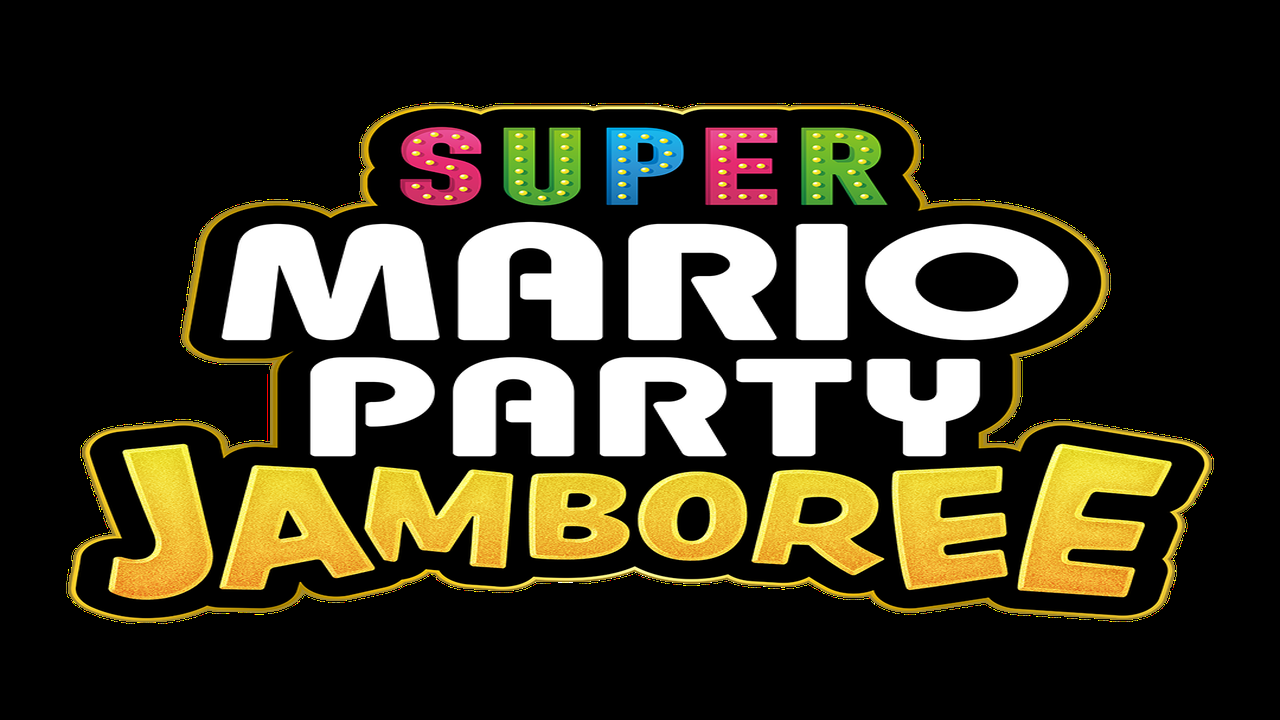As the series’ third entry on the Nintendo Switch, Super Mario Party Jamboree needed to rise to the occasion. The positive critical reception and even more positive sales of its predecessors meant it had to satisfy existing fans while also trying to attract new ones. I’m thrilled to say it definitely did with the former, and I suspect the latter will also prove true. Jamboree is my favorite Mario Party game in years.
Let’s face it—with nearly 20 games spread over 25 years, you know Mario Party. What makes this version stand out? For one, it’s the first Switch entry where you need two hands to count the number of boards! There are five new, plus two returning (Mario’s Rainbow Castle and Western Land). All are winners, varied in difficulty and size, with multiple fun “gimmicks.” While there’s no way the board game fan in me can talk about them in any detail within the confines of this review, please look forward to a future issue of PNM where we’ll have a ranking spread.
Super Mario Party Jamboree also trumps its predecessors in playable characters, with over 20 to pick from (a couple needing to be unlocked). Some characters also appear as “buddies,” operating slightly similar to allies from a couple of prior MP games. However, they’re arguably better as partners here due to being limited to three turns. Thus, it’s a balanced mechanic rather than being potentially overpowered. The means to acquire these is also superior, with lengthy standout challenges that straddle the line of “mini” games.

Speaking of minigames, you’re going to see familiar ones. Some of this is due to returning favorites, a common choice for the series—and I’m not complaining. More is due to the reality that after so many entries, ideas are stretching thin. Heck, even if you aren’t an MP vet and this is your first entry, you’ll see familiar minigames even within the “over 110” offered (many limited to specific modes). But in the grand scheme, it doesn’t matter much. First, each game looks different, with diverse, eye-catching Mushroom Kingdom window dressing. Second, most games are entertaining and don’t overstay their welcome. Third (unlike 2018’s Super Mario Party), you can turn off motion controls. These have attracted many fans since Mario Party 8, and I count myself as one. But this is an ideal option when playing in handheld mode. Finally, you and your friends will be too busy laughing and yelling to care.
What if you don’t have any local friends? You can take your Jamboree party online. Its predecessor finally gave us an online mode in the way most desired, and this latest is a continuation. I’ve little to add that wasn’t already said in my Mario Party Superstars review (local multiplayer’s still preferable), but online will get additional mention shortly (only don’t look for my name on the brand-new ranking monitor leaderboards). But what if you aren’t a paid Switch Online subscriber? You can benefit from the launch window promotion of a free 3-month membership.
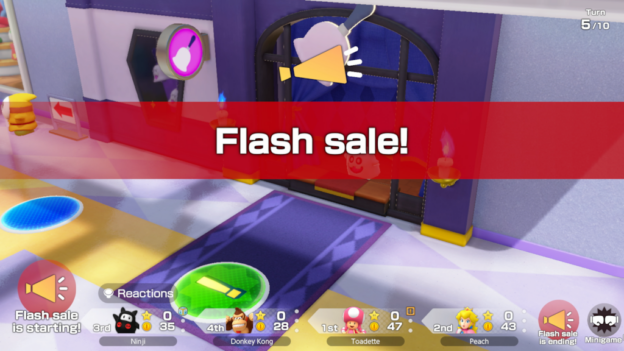
But even solo gamers are covered with “Party-Planner Trek.” This mode has been a talking point for many, and understandably, as it’s a pretty hearty offering compared to past entries’ single-player mode attempts, such as Mario Party: The Top 100. While some will likely gravitate to the prime party mode first, others will do this one initially to “Help set up,” completing tasks across five of the seven boards. For example, the elevator at the Rainbow Galleria mall isn’t functioning. Taking the escalators and working towards the top, you see a shopping bag wedged in the third-floor doors. Remove it, and a new shortcut becomes available when playing the board for a small operator fee of 5 coins. The fact that I finished this mode at just 73 percent means there’s replay value here, too. Most importantly, it’s entertaining.
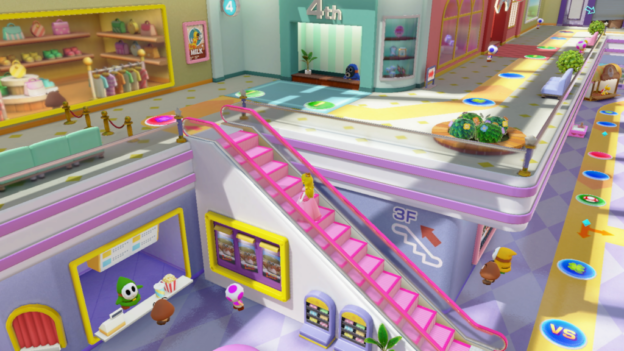
While early MP games firmly established the star-chasing tradition, later entries introduced several secondary modes—and this continues here with Super Mario Party Jamboree. Part of me feels guilty limiting most of these to a lone paragraph. But (besides word count considerations), it’s a pragmatic solution, as partying on boards has always garnered the most attention. While these aren’t bad or without merit, they do come off feeling like the side modes they are.
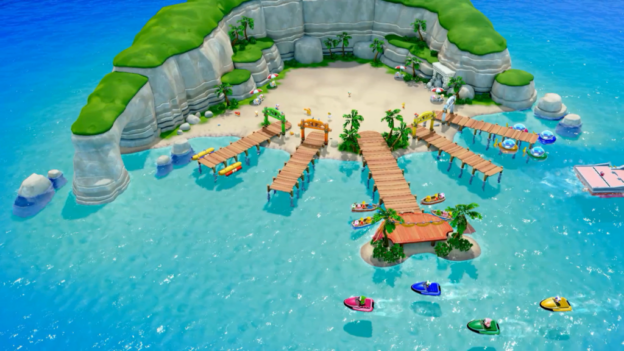
Minigame Bay is your typical way to play games apart from a board (with an unlockable boss rush mode). Koopathlon is similar to the Cointhalon in Mario Party Star Rush. Paratroopa Flight School is a younger person’s game, with a Joy-Con in each hand and arm flapping reminiscent of motion controls Wii heyday. Rhythm Kitchen will likely remind you of other rhythm games showcased in a couple more recent MP entries. Toad’s Item Factory offers less intensive motion controls. Jamboree is not a singular instance of an MP game having mixed side content, and when the party mode is so much fun, how much additional discussion does this even warrant? It’s a way to add diversity and value to the package with content that wouldn’t stand alone.
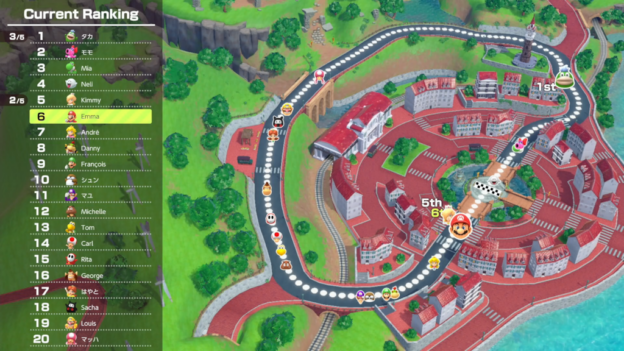
One mode meaty enough to warrant its own paragraph is Bowser Kaboom Squad. It’s his most prominent MP role since Mario Party 10. Once you do the tutorial, you’ll unlock the ability to tackle Imposter Bowser with up to 8 real players instead of computer ones. I took this mode online, and besides enjoying the unique bomb-blasting gameplay (and co-op minigames) with an increased roster, I also liked the different items, earning achievements, and improving my rank. If any Super Mario Party Jamboree mode is worth expanding on for the future, this might be it.

The game gives you options for how long you wish to party. You can have a game length of as few as 10 rounds, although this is too short on most boards to see all they can offer. Maximum is 30, although plan an evening around that time. Estimates get shown for how long these might take, and they’re that alone—estimates. They seem based on the slowest case scenarios, so take them with a healthy dose of skepticism. I’ve played every board (most multiple times) solo and in multiplayer and haven’t come close to these times. Plus, you can increase CPU speeds, so pace shouldn’t be an issue. The neatest option is “Pro Rules,” which “downplay luck to focus on skill.” This mode eliminates chance time spaces, which is worth a point alone. You can also vote on minigames, which lessens the likelihood of running into those based on random chance and the few that aren’t much fun. Mario Party Island Tour, this is not.
Will the Switch catch the GameCube for the number of Mario Party entries on a single system? Probably not. But if Jamboree is the last on the hybrid, it’s a great game to go out on. It’s a celebration of boards, and “Pro Rules” go a long way in making previous series’ complaints no longer valid. While there are a few minor issues, let’s face it: this game will sell millions, and deservedly so. Imposter Bowser and his boss minions don’t stand a chance, whether you’re a party of one, a group of local friends, or an online crew. Collecting stars hasn’t been this much fun in years.

